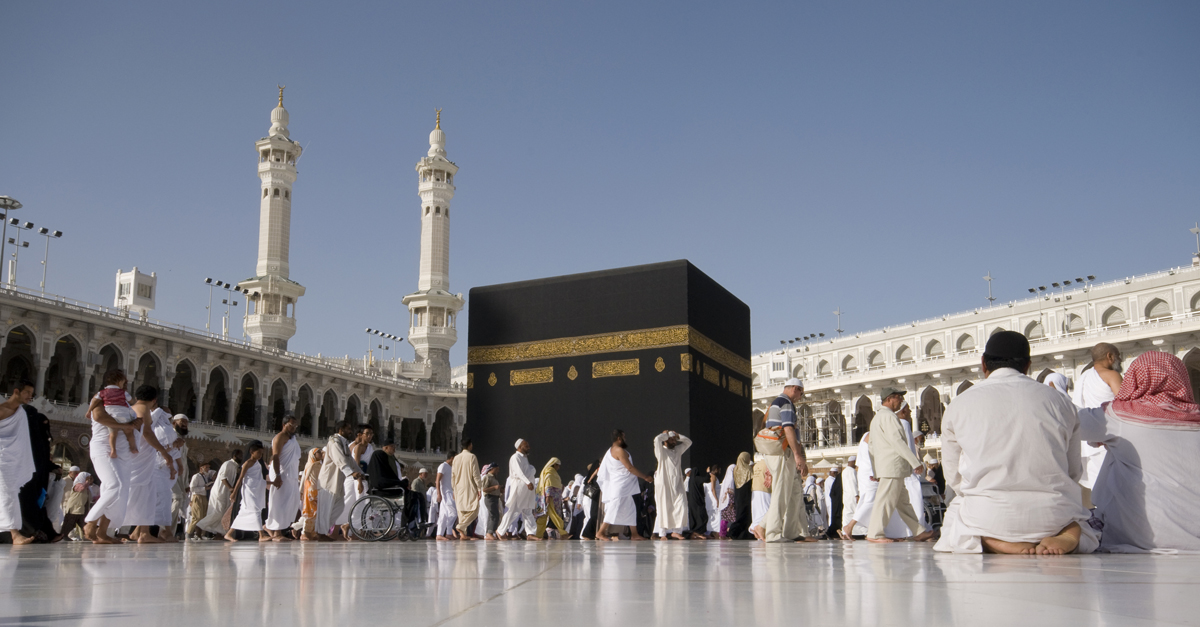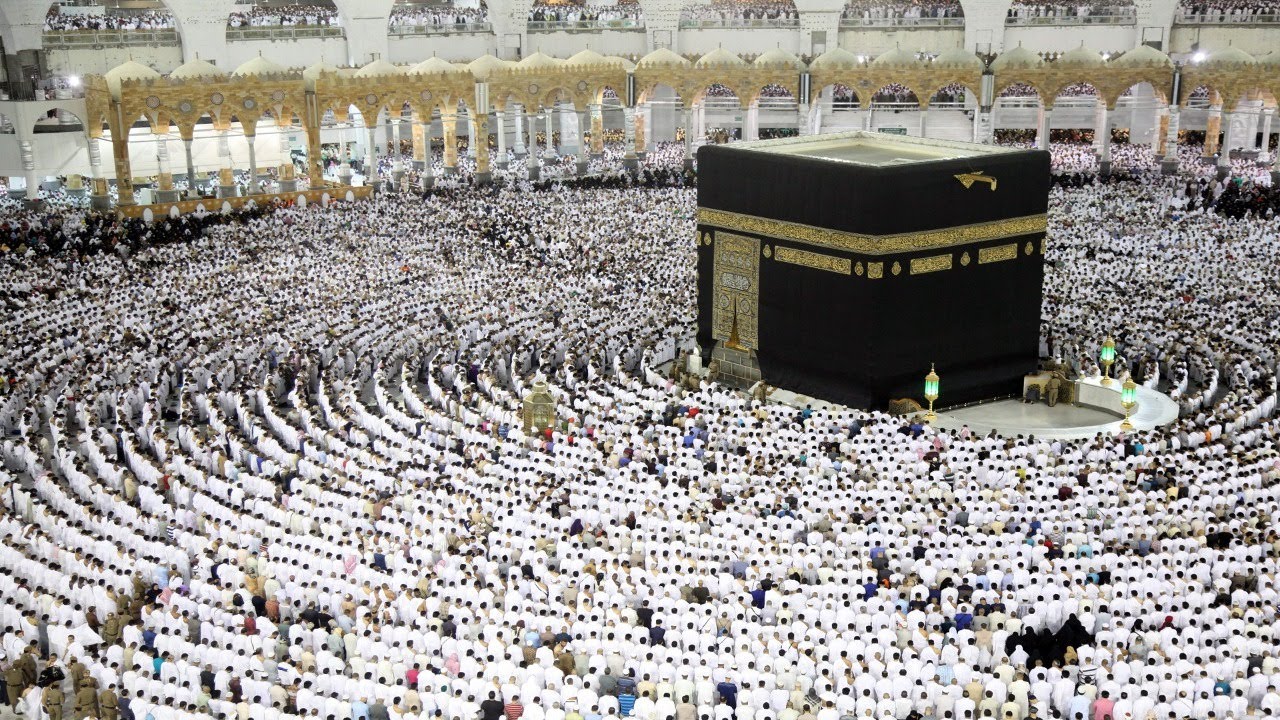This article delves into the Wajibat of Hajj, the obligatory steps and actions that must be performed during the pilgrimage to Mecca. From Ihram to Tawaf to Sa’i, the article provides a comprehensive guide to the Wajibat of Hajj, outlining each step in detail and providing valuable insights and tips to ensure a successful and spiritually fulfilling Hajj journey. Whether you are a first-time pilgrim or a seasoned traveler, this article is a must-read for anyone looking to deepen their understanding of the Wajibat of Hajj and make the most of their pilgrimage experience.
Wajibat of Hajj Step-by-Step

Hajj is one of The 5 Pillars of Islam and is a mandatory obligation for all financially and physically able Muslims to perform at least once in their lifetime. It is a journey of spiritual cleansing, forgiveness, and rejuvenation. However, performing Hajj can be overwhelming, especially for first-time pilgrims. In this article, we will guide you through the Wajibat (mandatory acts) of Hajj so that you can easily perform your Hajj and follow Islamic teachings.
Ihram
Ihram is the state of ritual purity a pilgrim must enter before starting the Hajj. It involves wearing two white unstitched sheets of cloth for men and modest, loose-fitting clothing for women. Before entering Ihram, it is recommended to perform Ghusl (a full body wash), trim nails, and remove unwanted body hair.
Intention
The first step of Ihram is to make the intention to perform Hajj. This should be done in the heart, with sincerity and devotion to Allah.
Talbiyah
Once the intention is made, the pilgrim should recite the Talbiyah, a prayer recited throughout the Hajj and Umrah in Islam. The Talbiyah goes as follows:
“Labbaik Allahumma Labbaik, Labbaika La Shareeka Laka Labbaik, Innal Hamda Wan-Ni’mata Laka Wal-Mulk, La Shareeka Lak”
Translation: “Here I am, O Allah, here I am! Here I am, there is no partner for You, here I am! Surely all praise, grace, and dominion are Yours, and You have no partners.”
Tawaf
Tawaf is circling the Kaaba seven times in a counterclockwise direction. It is the first of the Wajibat of Hajj.
Start of Tawaf
To start Tawaf, the pilgrim should approach the Kaaba and raise their hands to their ears, saying the Takbir (Allahu Akbar). Then, they should kiss or touch the Black Stone (if possible) and start the seven rounds of Tawaf.
Du’a
During Tawaf, the pilgrim can recite various supplications and prayers, such as the following:
“Rabbana atina fid-dunya hasanatan wa fil-akhirati hasanatan waqina adhaban-nar.” (Our Lord, give us good in this world and good in the hereafter and save us from the punishment of the Fire.)
“Rabbana hablana min azwajina wa dhurriyatina qurrata a’yunin waj’alna lil-muttaqina imama.” (Our Lord, grant us from among our wives and offspring comfort to our eyes and make us an example for the righteous.)
End of Tawaf
After completing the seven rounds of Tawaf, the pilgrim should cover their right shoulder with the Ihram sheet and perform two Rak’ahs of prayer behind the Maqam Ibrahim (a stone that bears the footprint of Prophet Ibrahim). This completes the Tawaf.
Start of Sa’i

To start Sa’i, the pilgrim should climb the hill of Safa and face the Kaaba, raise their hands and say the Takbir. Then, they should recite the following supplication:
Hajj is the annual pilgrimage to Mecca that Muslims worldwide perform as a religious obligation. During the Hajj, pilgrims carry out several rituals, including the Sa’i, walking seven times between the hills of Safa and Marwa. Sa’i is a crucial part of Hajj in Islam and holds significant importance in Islam. In this article, we will explore the meaning of Sa’i and its significance during the Hajj pilgrimage.
Understanding Sa’i
Sa’i is the Arabic term for “to pursue or seek.” It is walking seven times between the hills of Safa and Marwa. These two hills are situated in Mecca and are about 450 meters apart. The act of Sa’i is performed after Tawaf, which is the circumambulation of the Kaaba, the holiest site in Islam.
The story behind Sa’i is rooted in Islamic history. It is believed that Hajar, the wife of Prophet Ibrahim (AS), was stranded in the desert with her infant son, Ismail (AS). In search of water, she ran between the hills of Safa and Marwa seven times until she found a spring known as Zamzam. The act of Sa’i commemorates Hajar’s struggle and her unwavering faith in Allah.
What do you think of watching: Islamic studies for kids wudu
Performing Sa’i during Hajj
The act of Sa’i is performed during the Hajj pilgrimage after Tawaf. Pilgrims start at the hill of Safa and recite the Takbir, a declaration of Allah’s greatness. They then proceed to walk towards Marwa, covering a distance of approximately 450 meters.
Once they reach Marwa, they recite the Takbir again and return towards Safa, walking another 450 meters. They continue this process seven times, ending at Marwa. Sa’i is performed in the state of Ihram, a state of spiritual purity that Muslims enter before performing the Hajj.
Significance of Sa’i
Sa’i is a crucial part of Hajj and holds immense significance in Islam. It commemorates Hajar’s unwavering faith in Allah and her struggle in the desert. It teaches Muslims the importance of patience, perseverance, and faith in Allah.
Sa’i is also a reminder of the importance of seeking and pursuing the truth. It symbolizes the search for water in the desert, a basic necessity of life. Muslims are reminded never to give up their pursuit of truth and righteousness, no matter how difficult the journey may be.
How Many Sunnah of Hajj?

- Hajj is a sacred pilgrimage that is mandatory for every non-disabled and financially capable Muslim to perform at least once in their lifetime. It comprises several rituals, some obligatory (wajib) while others recommended (Sunnah).
- When it comes to the Sunnah of Hajj, there are many actions that the Prophet Muhammad (peace be upon him) performed during his Hajj, which Muslims are encouraged to emulate. However, it is difficult to determine an exact number of sunnah actions as they can vary depending on different scholarly opinions.
- Generally speaking, the Sunnah of Hajj can be divided into two categories: those related to Ihram and those related to the actual performance of the Hajj rituals.
- Some of the Sunnah related to the Ihram include taking a bath before entering Ihram, wearing the prescribed clothing of the Ihram, making the intention (niyyah) for Hajj or Umrah, reciting talbiyah, and avoiding prohibited acts such as cutting hair or nails.
- As for the Sunnah related to the performance of the Hajj rituals, they include performing Tawaf around the Kaaba, walking briskly (ramal) during the first three rounds of Tawaf, performing two Rakat of prayer behind Maqam Ibrahim, walking between Safa and Marwah (sa’i), spending the night in Mina, throwing pebbles at the three Jamrat (pillars representing Satan), performing the sacrifice of an animal (Qurbani), and shaving or cutting hair after completing the Hajj.
- While some scholars may differ on the exact number of Sunnah of Hajj, it is agreed upon that performing these recommended actions can earn a person extra reward and blessings from Allah. However, it is important to note that the focus should always be on fulfilling the obligatory aspects of Hajj before engaging in any recommended actions.
What do you think of watching: Qiyam Al-Layl
Frequently asked questions:
What are the Wajibat of Hajj?
The Wajibat of Hajj is the obligatory action that a Muslim must perform during the pilgrimage of Hajj. These include making the intention (niyyah), assuming the state of Ihram, performing Tawaf around the Kaaba, walking between Safa and Marwah, spending the night in Mina, and throwing pebbles at the three Jamrat (pillars representing Satan).
Why is the Wajibat of Hajj important?
Fulfilling the Wajibat of Hajj is essential for the validity of the Hajj and Allah's acceptance of the pilgrimage. Neglecting any of the Wajibat may invalidate the Hajj and require the pilgrim to repeat it.
What is the difference between Wajibat and Sunnah of Hajj?
Wajibat is the obligatory actions of Hajj that the pilgrim must perform, while Sunnah is the recommended actions that are not obligatory but are highly encouraged to perform.
What happens if a pilgrim misses one of the Wajibat of Hajj?
Missing one of the Wajibat of Hajj may invalidate the Hajj, and the pilgrim may need to repeat it to fulfill all the necessary obligations.
Can a person perform Hajj without fulfilling all the Wajibat?
No, for the Hajj to be valid and accepted by Allah, all the Wajibat must be fulfilled. Any neglect or omission of the Wajibat may invalidate the Hajj.
Conclusion:
The term “Wajibat of Hajj” refers to the obligatory actions that a Muslim must perform during the pilgrimage of Hajj. These include the performance of certain rituals and acts, such as making the intention (niyyah), assuming the state of Ihram, performing Tawaf around the Kaaba, walking between Safa and Marwah, spending the night in Mina, and throwing pebbles at the three Jamrat (pillars representing Satan). Fulfilling these obligations is essential for the validity of the Hajj and Allah’s acceptance of the pilgrimage.


